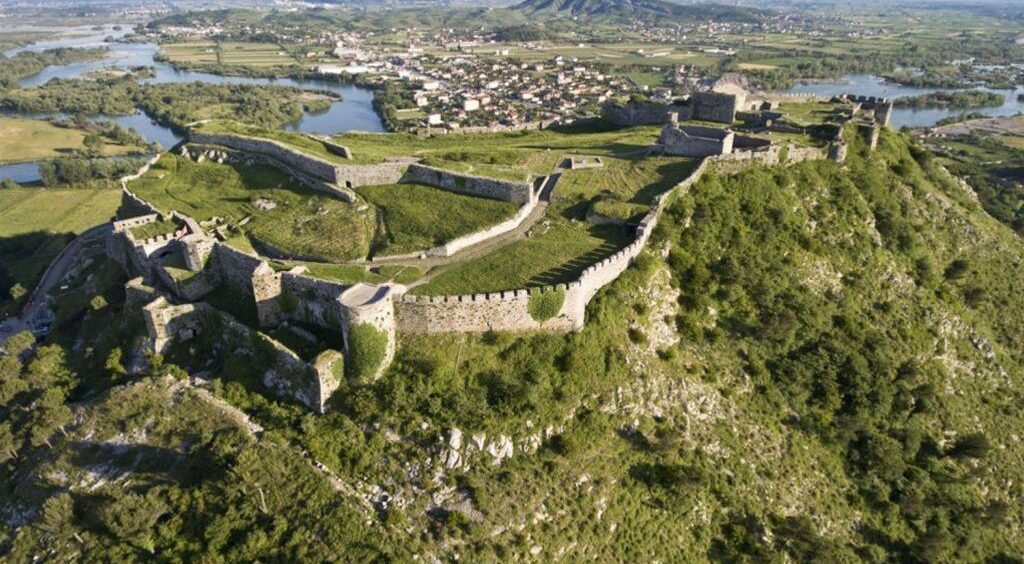The Castle of Shkodër, also known as Rozafa Castle, is one of the most important fortresses in Albania and beyond. For a long time, it has remained a very significant monument in the country. We will not elaborate here on the origin of the name “Rozafa Castle,” as the legend of Rozafa is widely known. The castle is built on a rocky hill at the entrance to the city of Shkodër, on its southeast side. It is believed to have been constructed since antiquity, withstanding the centuries and standing proudly to this day.
Structure
The castle has a strong strategic position, controlling the vast surrounding territory. It consists of three main courtyards, arranged in a stepped formation, one rising after the other, with gates separating them. Such a structure makes it easier for tourists to navigate the spaces within the site.
The main entrance is from the northeast, and from there, visitors enter the first courtyard. In this space, there is a cylindrical tower, a warehouse, and a three-story Venetian building. In the second courtyard, there is the Fatih Mosque, the prison, and another warehouse.
In the well-known “Travelogues” of Evliya Çelebi, the Castle of Shkodër is described, mentioning that within it, there are no shops, only 100 soldier residences, and storage for grain and ammunition.
The Rozafa Museum
It is located in the third courtyard of the castle, specifically in the Venetian building known as the “Captaincy.” Here, the nearly 4000-year history of the castle and the most prominent local families from various historical periods is etched. Numerous Albanian and foreign tourists who visit this site are informed in both Albanian and English. The Braille alphabet is also in use. Visitors can learn about the history of the city, various events, and important personalities through engravings, reproductions of archival documents, and artworks from different eras.
When you ascend to the third courtyard, at the highest point of Shkodër Castle, you can enjoy a fantastic landscape. The natural phenomenon of the meeting of the known rivers: Buna, Kir, and Drin, offers an extraordinary view. Come and touch history with your own hands!














 Rruga e Elbasanit, Pallati nr. 111,
Rruga e Elbasanit, Pallati nr. 111,